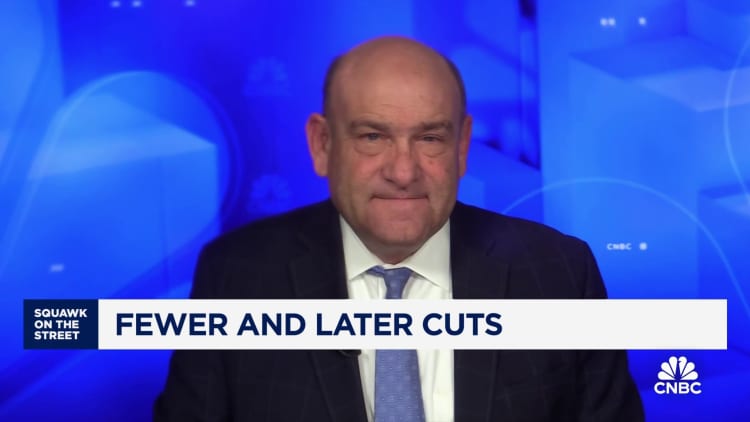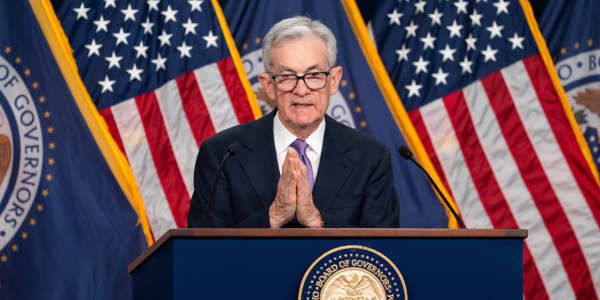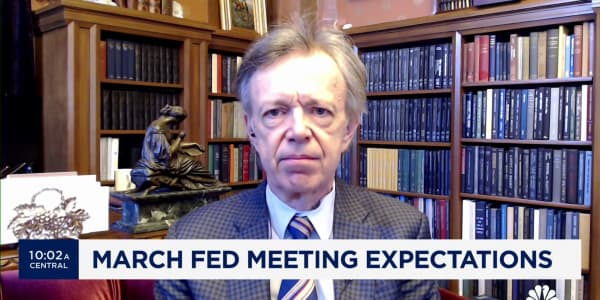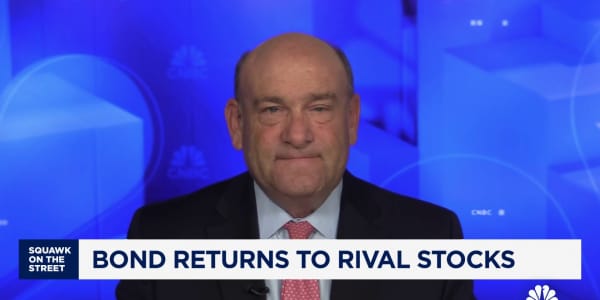
Respondents to the CNBC Fed Survey see fewer interest rate cuts than the market's aggressive outlook, with the central bank starting them later in the year than traders currently hope.
Just 9% see the Federal Reserve cutting rates in March. Fifty percent see a cut in May and only in June is there a majority of 70% predicting that rates go down. Futures markets, meanwhile, place a 37% probability on a March cut and around an 84% chance in May. And while futures markets have priced in between five and six rate reductions this year, survey respondents, on average, see just a bit more than three.
"There is little reason to expect a major slowdown in the economy so the Fed will likely not risk the gains in inflation it has made by easing prematurely," wrote Joel Naroff, president of Naroff Economics, in response to the survey.
The Fed's interest rate decision is Wednesday at 2 p.m. ET and will be followed by a news conference by Fed Chief Jerome Powell, where traders will parse his words for any indication on when the central bank may start to move.
It's fairly typical for this group of Fed watchers to be more closely aligned with the central bank's outlook than the market. The question remains of who has it right and how much it matters. By 2025, the market, the survey and the Fed forecasts all converge on a funds rate between 3.3% and 3.6%. The debate now is over how fast the Fed gets there.
"(Fed Chair Jay) Powell will push back against the market on what they are pricing in for cuts but still lean into a few,'' predicts Peter Boockvar of Bleakley Financial Group. "(It's a) tough balance because markets hear what they want to hear."
Economic outlook
While respondents predict a cautious Fed, on balance they think it should be more aggressive: 56% say the bigger risk is that the Fed cuts too late while 44% say the risk is going too early.
The 25 respondents, including economists, strategists and fund managers, were less united on the risks around reducing the Fed's $7.6 trillion balance sheet. They expect the reduction of the balance sheet — known as quantitative tightening — to end in November. The Fed is seen lowering its total reserves by another $1 trillion to $6.6 trillion and reducing bank reserves to $3 trillion from the current level of around $3.5 trillion.
At that level, bank reserves would be almost double where they were before the Fed started increasing its balance sheet to provide more stimulus to the economy. The central bank has said it wants to stop QT just above the level of what it calls "ample reserves." Thirty-six percent of respondents say the bigger risk is that the Fed leaves the balance sheet too big, compared with 16% who say the risk is keeping the balance sheet too small. But 32% say neither is much of a risk and 12% say both risks are equal.
The CNBC survey shows forecasters still see a slowdown ahead, but one not nearly as severe as they misforecast a year ago. Last year, through at least the first half of the year, respondents predicted growth would slow below 1%, along with rising unemployment. Growth came in above 3% and unemployment barely budged.
This year, the average gross domestic product forecast is for GDP to slow to 1.3%, unemployment to rise six-tenths of a point to 4.3% while the headline consumer price index ends the year at 2.7%. But those averages hide a spectrum of views on the outlook.
"With the yield curve inverted since November 2022, leading economic indicators down 21 months in a row, and the M2 money supply declining year-over-year, I just can't bring myself to abandon my recession forecast,'' said Robert Fry, chief economist, Robert Fry Economics LLC. "But it is becoming apparent that, for various reasons, the U.S. economy is far less interest-sensitive than it used to be."
But Mark Zandi of Moody's Analytics writes in, "It is difficult not to be more upbeat about the economy's prospects. And while there are downside threats, including the potential for various geopolitical hotspots to boil over and a contested presidential election, they feel increasingly less threatening."
Don't miss these stories from CNBC PRO:
- Forget the 'Magnificent 7,' these Nasdaq stocks are next in line to lead the rally, according to the charts
- Nvidia is now 'deeply overbought' and due for 'consolidation,' says chart analyst
- Eli Lilly's Zepbound is off to a strong start, but here's what needs to happen to push shares higher
- Investors are shifting into this type of bond fund at the fastest pace in three years





